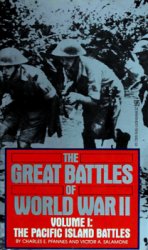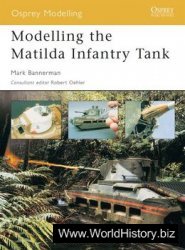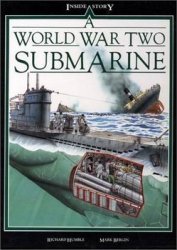Missile, but Congressional opposition has led to its abandonment. ASATS are controversial but the importance of space in military surveillance and communications and the possible development of ASAT-capable advanced abm systems prevents an asat ban receiving universal approval, asats are discussed at the Defense and Space Talks in Geneva. Other types of system designed to destroy or degrade satellites include ground-based DEWS. EJG.
Anti-submarine warfare. This divides into two main problems - location and attack. So far, the most successful method of detecting a submerged submarine has proved to be sound used either passively (hydrophones - used from early in World War I) or actively (sonar/asdic - in service from just after 1918). In certain circumstances, the magnetic signature of the hull can be used by a magnetic anomaly detector, first used in action in 1943. The first effective means of attack - the depth charge fired at a predetermined depth by a pressure-operated fuse — appeared during World War I. At first it was rolled off the stern of a ship, but this was soon supplemented by firing out to the sides by mortars to provide a wider “pattern” of explosions. During World War II, depth charges were adapted to be dropped from aircraft (as were hydrophones in the form of “sonobuoys”) and fired ahead of surface ships by mortars (“Squid” and “Limbo”; another multiple mortar device, “Hedgehog”, used more, smaller, contact-fused charges). An “intelligent depth charge” appeared in the form of an acoustic-guided torpedo. By the end of the war “snorkels” and new high-speed submarines had shifted the balance, which had been going against the old sub-mersibles, back in favour of what had become true submarines. Since then, detection systems and weapons have been further developed, more use is made of submarines in the anti-submarine role and helicopters are widely used for both detection and attack. DJL.
Anti-tank guided weapon (ATGW). Missile guided to its target by remote control through a wire paid out during its flight.
Anti-tank gun. High-velocity, direct-fire gun designed to defeat armoured fighting vehicles, normally using kinetic energy (ke) projectiles. Can be towed or self-propelled.
Anti-tank rifle. An infantry platoon weapon utilizing a high-velocity, armour-piercing cartridge. Germany developed the 13mm Tankgewehr M1918 in World War I; the British army used the 0.55in Boys AT Rifle, 1937-43. The immoderate recoil of such rifles, and the appearance of heavier tank armour, led to the development of anti-tank missile weapons during the course of World War II.
Anti-tank weapons. Anti-tank weapons can penetrate the armour of an enemy armoured fighting vehicle either by crashing through by sheer kinetic energy, by directing the energy of a normal chemical explosion using “shaped charge” techniques or by setting up stresses in the armour by “pancaking” explosive on its surface. Kinetic energy rounds are fired by high velocity guns, often smoothbore. These are large and heavy, usually carried by other tanks, but lighter airborne cannon firing depleted uranium ammunition and modern self-forging fragment bomblets also use kinetic energy to penetrate. Shaped charge or High Explosive Anti-Tank (heat) war' heads are normal for most antitank missiles and infantry antitank systems as velocity of impact is not important, but size of charge. Squash head projectiles, (hesh), specially favoured by the British, also do not demand high velocities. The explosive anti-tank techniques are more easily defeated by modern armours. ArmourPiercing Discarding Sabots (apds) use advanced armour-piercing solid shot with a discarding sabot (ds) of light material to allow a gun to accelerate a sub-calibre projectile to very high velocity. The low-drag projectile maintains its kinetic energy better than a full calibre round. Increasing length and mass requires fin stabilization (fs) as in the apfsds. Depleted uranium is an excellent material for such rounds, with its high mass and exothermic reaction on impact. EJG.
Antonov, Gen Alexei (1896-1962). Russian, cos Southern Army Group and subsequently North Caucasian and Transcaucasian Army Groups 1941-42. In December 1942 he was appointed Chief of Operations of the General Staff and, after April 1943, was also Deputy Chief of the General Staff. Helped plan major Soviet offensives and attended most of the top-level Allied conferences.
ANZAC. Acronym for the Australian and New Zealand Army Corps formed in December 1914. The name was also given to the sector of the Gallipoli peninsula held by that formation in 1915. Later it was often more widely used to describe any member of the Australian and New Zealand forces.
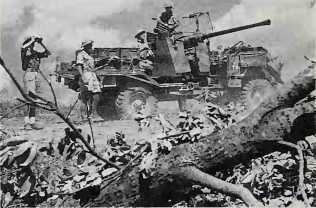
South African aa gunners, Italy, 1944
Anzio, Allied landings (January 22-31 1944). VI US Corps (Lucas) - 1st Armoured, 3rd and 45th US Divisions, 1st British Division and 2nd British Special Service Brigade — was landed on the Italian coast, southwest of Rome, to help II US Corps break through the Gustav Line during the First Battle of Cassino.
There was no German opposition to the landings. It was expected that Lucas would advance rapidly towards Rome, but he chose instead to consolidate his beachhead. By the time he was ready to advance, Kesselring had occupied the high ground around the beachhead and was able to defeat his efforts to break out.
Hitler was determined to teach the Allies a lesson that might deter them from landing in Northwest Europe. He released Fourteenth Army (von Mackensen) from Northern Italy to take charge of operations to destroy the VI US Corps beachhead; and reinforced
Kesselring with an open-handedness not seen since Stalingrad. The preliminary German counterattacks started on February 3. WGFJ.
Anzio, German counteroffensives (February 16-19 and February 29-March 3 1944). The first counteroffensive was launched by von Mackensen at Hitler’s direction on a very narrow front down the Rome-Anzio road with five divisions under LXXVI Panzer Corps (Herr). It was repulsed after four days’ bitter fighting by 45th US and 1st British Divisions, well-supported by heavy naval and air bombardments. To relieve the pressure at Anzio, Alexander opened the Second Battle of Cassino. Lucas was superseded as commander VI US Corps by Truscott from 3rd US Division when the crisis was over.
Hitler did not give up. The second counteroffensive, launched this time on a wider front, again by LXXVI Panzer Corps with five divisions, fell mainly on 3rd US Division, and was again repulsed. The Third Battle of Cassino was launched on March 15 in anticipation of a further German effort at Anzio, but a stalemate was not to be broken until the Allied spring offensive in May. WGFJ.
Anzio, Allied breakout from (May 23 1944). VI US Corps (Truscott) broke out on Alexander’s orders with instructions to cut off the retreat of the German Tenth Army (von Vietinghoff) at Valmontone. The front of LXXVI Panzer Corps (Herr) collapsed, leaving Valmontone only lightly defended. On May 25, however, II US Corps (Keyes) reached the beachhead from the main front, and enabled the Fifth Army Commander (Clark), in contradiction to Alexander’s orders, to turn Truscott’s Corps northwards towards Rome instead of eastwards to Valmontone. The German Fourteenth Army fell back through Rome, which was declared an open city, pursued by Truscott. Keyes’ Corps was belatedly made responsible for the Valmontone thrust, but was not strong enough and too late to intercept the Tenth Army, which escaped up the east bank of the Tiber. Rome was entered by the Americans on June 4 1944. WGFJ.
Aosta, Amadeo, Duke of (18981942). Italian Viceroy of Ethiopia and c-in-c East Africa, 1937-1941; surrendered to the British at Amba Alagi on May 16 1941.
Ap Bac, Battle of (1963). The battle near the hamlet of Ap Bac in the Mekong delta signified a turning point in the Vietnam War to strategists on both sides. Up to that time the US had assumed that strengthening and advising Saigon forces would be sufficient to defeat the insurgency, making it unnecessary to send American troops into combat.
In late December 1962, about
2,000 men of the Army of the Republic of Vietnam (arvn) 7th Division encountered 300-400 People’s Liberation Armed Force (flap) troops dug in along a canal near Ap Bac. The arvn brought planes, helicopters, armoured personnel carriers and US advisers to its assistance. Yet when fighting ended on January 2 1963, the ARVN had suffered 165 casualties, while the flap had downed five helicopters and escaped with fewer than a dozen dead. The Ap Bac battle forced the US to reassess whether advisory and material assistance alone would be sufficient to guarantee the survival of the Saigon regime. WST.
Appeasement. Tolerance of Nazi aggressions, especially Chamberlain’s agreement to Sudetenland’s seizure in September 1938.
Arab Legion. Major military formation of the Hashemite Kingdom of Jordan (pre-1949, Transjordan); formed 1921 by Lt Col F G Peake and other British officers; owed much of its efficiency to Lt Gen Sir John Glubb, its commandant from 1939 until 1956, when all British officers were dismissed.
Arab Revolt. In June 1916, Sherif Hussein-ibn-Ali declared the He-jaz independent of Turkish rule. His followers seized control of several towns, including Mecca, but suffered heavy losses against Medina. Britain sent material aid and military advisers, amongst whom was Capt T E Lawrence. He helped the Arabs to adopt a strategy of mobile guerrilla warfare that kept the Turks tied to the defence of Medina and the Hejaz railway, enabling Hu. ssein’s forces to advance north and capture Wejh and Aqaba. By the summer of 1917, the revolt had evolved into a nationalist uprising that now reached into Palestine and Syria. Furthermore, in September 1918, the Arab forces were an important feature of the right flank of Gen Allenby’s offensive. They captured Deraa and Damascus and were still advancing northwards when halted by the signing, on October 30 1918, of the Allied armistice with Turkey. MS.
Arab-Israeli Wars (1948, 1956, 1967 and 1973).
War of Liberation (1948-49). After the defeat of Germany in 1945, Jewish immigration into Palestine, mostly illegal, began in earnest. Arab opposition to the creation of a Zionist state hardened, and the British government made it clear that it wished to abdicate its mandate to govern Palestine as soon as possible. Arab attacks on Jewish settlements increased in 1947 and on the departure of the British in May 1948 the new state of Israel was immediately assailed by its Arab neighbours. The resultant war, lasting into 1949, cost Israel 6,000 killed and ended with the clearing of the Tel Aviv-Jerusalem road and the repulse of the Arab forces, which suffered some 20,000 casualties. Israel now held all the territory granted under the terms of the United Nations’ Commission of 1947 and increased its holdings in several areas, notably the Negev, although it failed to regain the old Jewish quarter of Jerusalem now held by the Kingdom of Jordan, which also annexed the West Bank region. Over 700,000 Arab refugees from Israeli-held territory now poured into the West Bank, the Egyptian-held Gaza Strip, Lebanon, Jordan, Syria and Iraq. Thus were laid the foundations of the refugee problem which has bedevilled Arab-Israeli relations ever since.
The 1956 conflict. No Arab state recognized Israel’s boundaries, and much of the new state was within artillery range of its hostile neighbours. Prime Minister David Ben-Gurion now created the Israel Defence Force (idf, or nahal) from a number of paramilitary organizations, regularizing what had Hitherto been a somewhat anarchic situation. He was assisted by men of remarkable ability like Moshe Dayan, ros of the idf in 1956 when the Israeli Army attacked the Egyptians in the Sinai on October 26, shortly before the Anglo-French landings at Port Said. Ten idf brigades outfought their more numerous but ill-coordinated opponents and had little difficulty in reaching the line of the Suez Canal, using paratroops under Col Sharon to seize the strategic Mitla Pass in central Sinai. Israel’s southern borders were secured, the Gulf of Aqaba (denied to Israeli shipping by Egypt in 1955) was opened up, and the Gaza Strip passed into Israeli hands, together with its swollen refugee population. The idf sustained fewer than 200 killed and
1.000 other casualties.
The Six-Day War (1967). Under un pressure, the idf withdrew from the Sinai in 1957 and the Arab states, encouraged by President Nasser of Egypt (now also President of the United Arab Republic [uarJ) resumed guerrilla attacks along Israel’s borders. On May 14 1967, Cairo Radio called on uar states to join in a “blow of annihilation” against Israel. Two days later, un Secretary-General U Thant acceded to Nasser’s demand that UN peacekeeping forces withdraw at once from the UAR-Israeli borders. Early on June 5, as
250.000 UAR troops and 2,000 tanks moved towards Israel’s borders, the IDF launched a devastating pre-emptive airstrike against the Egyptian Air Force bases, destroying almost 400 aircraft. Whilst this attack was in progress, the idf’s Southern Command attacked the Egyptian Army in the Sinai desert and around Gaza. By June 8 the IDF was back on the line of the Suez Canal, having decisively beaten seven Egyptian divisions equipped with modern Russian tanks and artillery, most of which fell into Israeli hands. On the third day of the war, the idf retook the old city of Jerusalem and on the fifth and sixth it swept the Syrians off the Golan Heights, capturing the key town of Kuneitra. In the “Six Day War” the Israelis had suffered fewer than 800 dead against more than 20,000 casualties inflicted on the uar forces, who also lost more than 400 aircraft and 800 tanks. Israel now held Jerusalem, the Golan Heights, the West Bank, the Gaza Strip and the whole of the Sinai Peninsula.
The war of attrition. Whilst the idf’s application of the classical principles of war drew wide acclaim, the humiliated uar immediately began to plan revenge. The idf was now obliged to tie down elite formations in defence of the Suez Canal, and the need to maintain high states of readiness at all times imposed great financial and social strains on Israel. Whilst Egypt was in no state to recommence large-scale military operations, a steady bombardment of the fortified idf positions on the Canal (the Bar-Lev Line) began in 1968. Israel responded with commando raids against Egyptian military targets. Russian advisers now arrived in Egypt, together with much new equipment. Between 1970 and 1973 Egypt received 600 Russian-built combat aircraft and 2,500 tanks; Syria, 330 aircraft and 2,000 tanks. Both countries were also supplied with large numbers of air defence guns and missiles, which were to prove almost decisive when open war broke out again. Under its energetic cos, the reinvigorated Egyptian Army embarked on an intensive retraining programme. Israel also took delivery of large quantities of military equipment from
, the West.
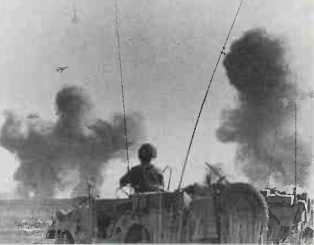
Action on the Golan Heights, Oct 1973
The Yom Kippur War (1973). Early in October 1973, Israeli intelligence detected military build-ups along the Syrian border and south of the Suez Canal. After two earlier partial call-outs of idf reservists that year and the imminence of Yom Kippur, the solemn Day of Atonement, Defence Minister
Moshe Dayan hesitated to order a general mobilization until only a few hours before the attacks were launched on the holiest day of the Jewish calendar. On the Golan Heights near Kuneitra, where the Syrians attacked with five divisions, only two weak idf brigades were in position; these had to hold and buy time whilst the nation leapt to arms. The idf no longer enjoyed air mastery as in 1967, for the Syrians had deployed their forward air defences skilfully, shooting down 30 Israeli aircraft on the first day. The attackers made full use of their 5-to-l superiority on the ground and also seized the vital Israeli electronic monitoring post on top of Mount Hermon, “the eyes and ears of the State of Israel”. The idf narrowly held on, losing 250 tanks, before launching a successful counterattack on October 10 which threw the Syrians back with the loss of 867 tanks. In the south, the battle initially went badly for the idf. The Egyptians carried out a brilliant assault crossing of the Suez Canal, neutralized the Bar-Lev Line, and set up a line of defence some 6 miles (10km) north of the Canal, carefully siting their newly acquired anti-tank guided missiles. These, courageously served, virtually destroyed an idf tank brigade when it launched a hasty counterattack without close infantry support. The Egyptians also used self-propelled ZSU-23 quad-barrelled air defence guns and SA-6 missiles with great confidence and skill. The idf did not regain air superiority until the arrival by air from the USA of sophisticated electronic countermeasures equipment costing $2,200 million.
Having driven off the first Israeli counterattack against their Suez bridgehead, the Egyptians brought armour across the Canal and on October 14 launched a full-scale attack, which was decisively repulsed. The IDF now switched its forces from the Golan Heights to the Sinai, where they counterattacked, drove down to and across the Canal, then swept south towards Suez town, which was entered on October 24. A few hours before the un Security Council cease-fire took effect, the idf recaptured the summit of Mount Hermon by helicopter assault.




 World History
World History
